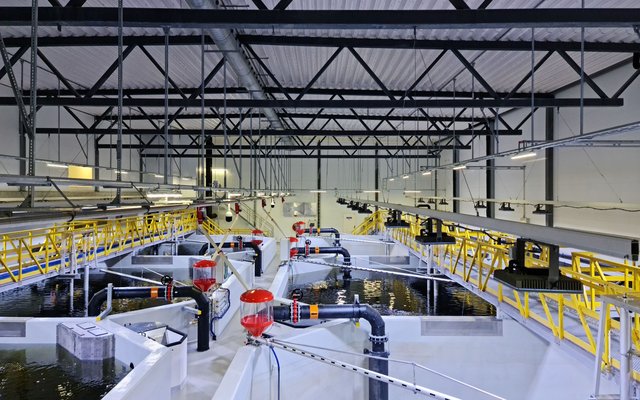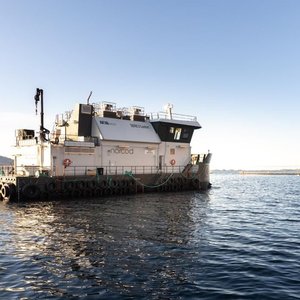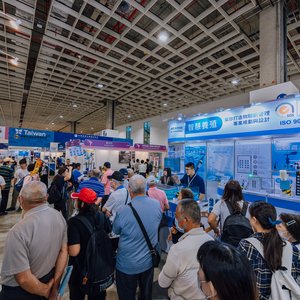Carried out by The Conservation Fund Freshwater Institute as an independent third party and with funding support from PeroxyChem, a study on peracetic acid (PAA) as a disinfectant in recirculation aquaculture systems (RAS) was conducted in collaboration with Stuttgart National Aquaculture Research Center and National Center for Cool and Cold Water Aquaculture.
PAA has antimicrobial properties at low doses and, in turn, does not impair RAS biofilter nitrification. Additionally, compared with other aquaculture disinfectants, PAA is considered environmentally friendly. It does not leave toxic residues since it degrades to acetic acid, oxygen, and water when applied in an aqueous environment. Moreover, PAA is also more potent compared with other eco-friendly disinfectants, such as hydrogen peroxide, when used against bacteria, fungi, and spores.
Although previous in vitro studies have demonstrated the toxicity of PAA to a range of fish pathogens, little knowledge exists about the bactericidal effects of PAA on fish pathogens in RAS water.
Considering the increasing adoption of RAS technologies in the salmon aquaculture industry, the team tested in vitro PAA efficacy against three important bacterial pathogens in water from representative salmonid RAS. The research assessed PAA concentration and exposure duration to achieve the removal of Yersinia ruckeri, Weissella ceti, and Flavobacterium columnare which causes redmouth disease, weissellosis and columnaris from RAS water.
To determine the relative sensitivity of each bacterial pathogen to PAA, researchers established different treatments with increasing levels of disinfectant and exposure time. Each selected level of PAA was applied to separate flasks of a pathogen-RAS water suspension. Zero, 2, 5, and 10 milligrams of PAA per liter were used to treat Y. ruckeri and W. ceti infected RAS water during 0, 2, 5, and 10 minutes. Similarly, 0, 1, 2, 3, and 5 milligrams of PAA per liter were used to treat F. columnare infected RAS water during 0, 2, 5, and 10 minutes.
Results showed that complete disinfection was achieved for all three bacterial pathogens examined at the following doses: Y. ruckeri was eliminated following 5 min exposure to 5 mg/L PAA, while W. ceti was eliminated following 10 min exposure to 10 mg/L PAA. F. columnare complete elimination occurs with 3 mg/L PAA following 5 min exposure time.
Results provide useful information to develop PAA protocols for RAS culture prophylaxis and reduce populations of specific bacterial pathogens residing in "typical" RAS water. Researchers highlight that RAS waters are a unique environment where numerous substances accumulate over time thus RAS operators need to consider their specific water chemistry characteristics when developing effective PAA treatment regimens. Finally, the study also provides relevant data for the growing scientific knowledge base to guide regulators that will evaluate the use of PAA in aquaculture as a friendly disinfectant.
Good C, Redman N, Murray M, Straus DL, Welch TJ (2022). Bactericidal activity of peracetic acid to selected fish pathogens in recirculation aquaculture system water. Aquaculture Research, 53, 5731– 5736. https://doi.org/10.1111/are.16031













